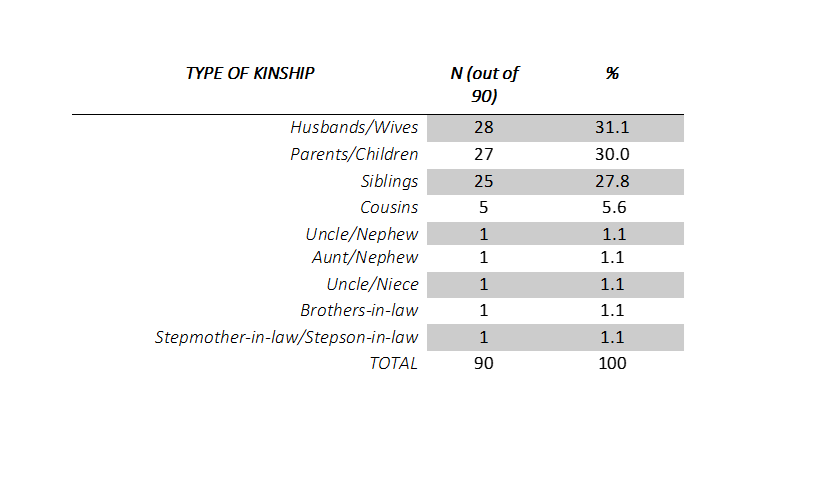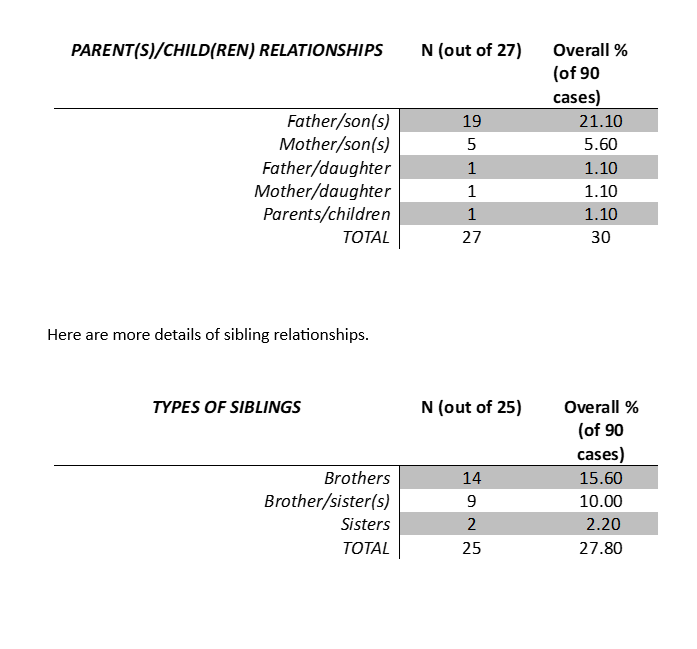The storming of the U.S. Capitol on January 6, 2021, was a momentous event politically, socially, and most importantly, in terms of the evolution of domestic extremism in the United States. The multifaceted consequences of January 6, mired by misinformation and disinformation, continue today. As of June 2023, over 1,043 people have been arrested for their purported roles on January 6, with defendants from nearly 50 states. Within that grouping, “338 defendants have links to more than 50 extremist groups and movements,” including (in order of highest representation): QAnon, Proud Boys, Oath Keepers, Three Percenters, White Nationalists, and Sovereign Citizens. Among the anti-statist extremists present on January 6 were accelerationists:
Individuals with disparate beliefs are united in the goal of hastening the cataclysmic end of economic, political, and social systems so as to more rapidly bring about what is seen as an inevitable end-times collapse and subsequent rebirth into a utopian afterworld.
Interestingly, however, about two-thirds of all defendants were not affiliated with such groups, meaning they were self-radicalized, “individual believers,” and their ranks were peppered with a host of personal grievances waiting for an outlet to trigger them into action. Ultimately, this fusion of factors contributed observably to the dynamic of mass radicalization becoming mass mobilization.
Further inquiry into the January 6 defendants – the largest criminal prosecution in U.S. history – shows 180 had military backgrounds. Among the states with the most defendants by state residency were: Florida (112, Pennsylvania (84, Texas (83, California and New York (71), Ohio (56), and Virginia (54). According to the Office of the U.S. Attorney for the District of Columbia, between 1,600 and 2,100 additional people are expected to be charged in relation to the January 6 attack. In that case, 2,600–3,100 could be charged for their conduct on January 6, accentuating the inordinate number of extremists mobilized into action that day. As of May 2023, over 30 Proud Boys and Oath Keeper members have pleaded guilty or been convicted in relation to their activities on January 6. The Oath Keepers founder, Stewart Rhodes, was sentenced to 18 years.
According to the U.S. Attorney’s Office for the District of Columbia, as of June 2023, the January 6 prosecutions include:
- 347 defendants charged with assaulting or impeding officers, including 109 with deadly weapons or serious bodily injury.
- 909 defendants charged with entering restricted federal buildings, 103 while carrying deadly and/or dangerous weapons.
- 310 defendants charged with obstructing or influencing official proceedings.
- 55 defendants charged with conspiracy related to obstructing congressional proceedings, law enforcement, or injuring officers.
- 587 individuals pleaded guilty to federal charges, many facing or expected to face incarceration.
Radicalization and Family Terror Networks/Family-Affiliated Terrorism
The reasons for an individual supporting an extremist movement or terrorist group include:
- Belief that the ideology is correct and merits support;
- Revenge for real or perceived victimization;
- Socioeconomic marginalization and alienation;
- Political marginalization and alienation;
- Protection against perceived oppressors;
- Acceptance, respect, or status;
- Pressure from family, friends, and community;
- Expunging dishonor due to moral indiscretion;
- Seeking purpose or excitement in life;
- Mental disability; and
- Alternative to failures or setbacks.
Radicalization is an identity formation process. Its intended result is the acceptance of violent extremism. Family’s importance and its unique role in providing an identity during childhood and adolescence have already been accepted in literature. However, as the January 6 events proved one more time, some families also radicalized and accelerated the radicalization processes of their members. There is a need to delve deeper into how familial connections catalyze radicalization and extremism.
Families can instill radical beliefs, values, worldviews, and ideologies. Those new inputs are often met with unfiltered acceptance, especially when familial ties intersect with extremist worldviews. The familial backdrop as a nurturing environment has continuously provided unique opportunities for terrorist groups.
Families are a significant source of emotional bonding. Families, by design, have the potential to fulfill the innate desire for belonging. Emotional support and validation in families may also lead people into a radicalization pathway. This will also strengthen one’s budding commitment to family-approved radical worldviews. In selected families, members are exposed to preselected information and narratives that would establish and reinforce ties with radical groups.
Confirmation bias in families has also proven to be a significant catalyst for radicalization. Fact-checking and further investigation to establish the truth are disproportionately low compared to other social settings. Sadly, particular family members tend to believe even an illogical and baseless view proffered by other kin. These January 6 siege cases attest that a growing number of people (the authors’ research has identified 177 individuals) entered the U.S. Capitol with a family member. Subsequently, they faced legal prosecution for engaging in criminal activities associated with the events.
Analogously, families provide transgenerational transmission of radical beliefs. Parents are essential agents in passing down their extremist ideologies to their children. Moreover, they may restrict their children’s mainstream values and significantly limit their exposure to diverse perspectives. Under the influence of groupthink, children are unlikely to have the opportunity to question and accept what is presented to them without resistance. That creates a vicious cycle of radicalization. Family structures facilitate higher rates of radical belief conversion due to the credibility and trust conferred within the family unit, in contrast to unaffiliated networks.Breaking free from that spell is complicated, time-consuming, and sometimes ineffectual.
In sum, family-affiliated extremism (or alternatively, family terror networks) involves two or more people from the same family unit who support the threat or use of political violence. “Kin terrorism has appeared across diverse views, from religiously motivated precepts to national liberation movements, and from hate-based ideologies to other extremist viewpoints.” The mix of radical tenets embraced by kin-connected insurrectionists on January 6 and their conduct merit attention.
Family-Affiliated Extremism Among the January 6 Rioters
The authors’ research thus far has found that 177 people were arrested with other family members in connection with their criminal offenses while entering the U.S. Capitol on January 6. The different family relationships encompassed 90 occurrences of kin relationships (e.g., husbands and wives, siblings, and parents and children) involved in January 6 events.
Collectively viewed, the January 6 suspects frequently show a pattern of embracing varied conspiracy theories and fringe perspectives (e.g., QAnon precepts, support for Stop the Steal movement, antigovernment and various militia ideologies, white nationalism, opposition to government COVID-19 restrictions, etc.) or other personal grievances. In total, these participants were primarily tied that day to an apparent unifying practical objective: interfering with the congressional certification of the Electoral College results tied with the 2020 presidential elections.
- Illinois husband with QAnon references on Twitter, expressed interest in being in D.C. on January 6.
- Texas son charged with father, claimed he entered Capitol against father’s wishes during mob action.
- Georgia mother and Tennessee son referred to Capitol breach as support for revolution, mother expressed willingness to die fighting oppression.
The family-linked U.S. Capitol defendants resided in several dozen states, comprised a breadth of ages ranging from a 20-year-old daughter to a 70-year-old husband, and held varied occupations/stages in life (e.g., real estate broker, doctoral student, retired, etc.). Some families entered the U.S. Capitol with their minor children, who are not included in this analysis as they were not prosecuted. Likewise, the convictions per family members sometimes comprised a few, relatively “minor” charges (e.g., entering or remaining in a restricted building as well as disorderly conduct therein). In contrast, others were charged with up to nine counts individually, and, for some, serious offenses (e.g., seditious conspiracy, conspiracy, obstruction of an official proceeding, and assaulting a federal officer). Convictions of family-affiliated extremists were marked by weighty offenses and resulted in prison sentences of 14 years and two months. Many of the offenders pleaded guilty or were found guilty at trial. Others are awaiting adjudication.
Two Montana brothers, for instance, are alleged to have been among the first ten rioters to climb through a window into the Capitol. The pair, and others, then pursued U.S. Capitol Police Officer Eugene Goodman, before ultimately entering the Senate floor, sitting in “Senators’ chairs, opened Senators’ desks, and reviewed sensitive material stored therein.” A Tennessee-based man and his mother from Georgia are on video surveillance on U.S. Capitol grounds and walking in the U.S. Capitol with other rioters. Both of them had flex cuffs while there. A Missouri-based niece and uncle faced multiple charges, including two connected to the theft of an engraved wooden nameplate of the Speaker of the House Nancy Pelosi.
A pair of male cousins – one from Louisiana and one from Texas – were charged with the same five crimes including assaulting a federal officer. The pair created and disseminated incriminating photos and videos of themselves at the U.S. Capitol, such as one where the Louisiana cousin told a contact on Facebook, “I have more videos of us breaching the Capitol but not gonna [sic] post them. We will be back and it will be a lot worse than yesterday!” In other social media posts, the Texas cousin stated “4 of us breached the cops blockade and us same 4 breached the Capitol.” Days after the event, some family members charged with U.S. Capitol connected crimes asserted they were merely exercising their free speech or predicted the FBI would “see some pics but no militia.”
Although often family members were charged with the same crimes, in other instances – as with an Iowa-linked mother and son – overlapping and distinct charges have been filed. In the case of two sets of spouses, they were charged similarly on four charges (including conspiracy whose goal “was to stop, delay, and hinder Congress’s certification of the Electoral College vote”), along with five others, some of whom are purportedly members of the Oath Keepers.
After attending a pro-Trump rally in Washington, D.C., a pair of male cousins, one from Kentucky and the other from Virginia, marched toward the U.S. Capitol “because” – according to the former – “President Trump said to do so.” One later shouted, “stop the steal,” once they were both inside the Capitol. Authorities intend to use a photo of the smiling pair wearing “‘Trump 2020’ baseball hats” and each “holding up their middle fingers” while inside the Capitol building as proof of their presence there. A North Carolina husband, with his wife nearby, remarked in a video, at Statuary Hall, “Who would’ve knew the first time I ever come would be to storm.” The same man, in concert with other rioters, referred to police as “F***ing traitor[s]” and, in unison with other protesters, screamed, “Where’s Nancy’s [Pelosi] office?” At an earlier point, the man repeatedly chanted with a crowd in the Capitol’s crypt, “Who’s House? Our house?” and “Stop the steal!”
Selected family members approached the U.S. Capitol as part of a larger block of group-linked rioters (e.g., Oath Keepers) in a “stack or line formation” in order to maintain “direct physical contact with one another” as it enhanced communication, “especially in crowded or noisy areas.” This appears to have taken place with two sets of spouses (from Ohio and Florida) and a brother and sister (from Arizona). Communications within distinctive cabals included text messages, phone calls, leveraging social media, and through a Zello (a push-to-talk application that operates like a walkie-talkie on a cellular telephone) channel called “Stop the Steal J6.” Other coordination between kin and individuals supposedly tied to formal groups has been proffered by accounts alleging they communicated together beforehand, stayed at the same hotels, and met there early on the morning of January 6. A North Carolina couple drove to Washington, D.C. in their own car, but joined a car caravan organized by a Twitter personality.
Sentencing for a North Carolina-based husband and wife who were convicted of “assaulting, resisting, or impeding law enforcement officers and obstruction of an official proceeding” and “for obstruction of an official proceeding,” respectively, resulted in the prison sentences of 41 months, for the former, and 8 months, for the latter. A Pennsylvania couple who pepper sprayed law enforcement on January 6, and conducted other criminal acts, was sentenced to two years (wife) and 14 years and two months (husband).
While approximately two-thirds of arrestees were unaffiliated with a particular group, some claimed or had connections to such entities as Proud Boys or Oath Keepers. According to an FBI affidavit, “Oath Keepers are a large but loosely organized collection of militia who believe that the federal government has been coopted by a shadowy conspiracy that is trying to strip American citizens of their rights.” A Florida couple, and another one from Ohio, were charged in unison with several suspected Oath Keepers members. Also, one such family member was listed by a purported co-conspirator as an “Ohio State Regular Militia” recruit. An Arizona brother and sister were charged with conspiracy with three supposed Kansas City Proud Boy members. The sister bragged she was invited to join the group’s chapter and displayed a challenge coin she claimed to have received from them. According to an FBI affidavit, Proud Boys “is a nationalist organization” that describes itself as a “‘pro-Western fraternal organization for men who refuse to apologize for creating the modern world; aka Western Chauvinists.’”
Among three female Oath Keeper members found guilty of conspiracy to obstruct an official proceeding included two wives and a sister. Kelly Meggs, the husband of one of the aforementioned spouses and leader of the Florida Oath Keepers, was convicted of seditious conspiracy and other charges. He was sentenced to 14 years in prison. Other notable defendants were a Florida Proud Boys father and son duo who formerly served as police officers. Two Oregon brothers, including a self-identified Proud Boy, were indicted on six federal counts, including conspiracy, obstruction of an official proceeding, and destruction of government property.
Family Terror Networks 2.0: Insights From January 6
From an analysis of the 177 family members authorities have linked with January 6-related family extremism, there were 90 occurrences of kin relationships (e.g., spouses, siblings, and parents and children). In some instances, family relationships involve individuals who were counted more than once (because multiple family members were present). For example, in the case of a father and two sons: they are listed once as “father-son” and again as “brothers.” While this may appear repetitive, the reality is two different forms of relationships were present. Ten percent of the 90 family-affiliated extremism cases (9) involved multiple counting. The fact that 17.1% (177/1,033) of the people who breached the U.S. Capitol did so with other family members exemplifies the effects of radicalization among kin.
In aggregate, the types of family relationships (90), among the 177 persons charged with other family members for their alleged federal crimes at the U.S. Capitol on January 6, included:

The results above show 88.9% of the 90 families comprising the family-affiliated extremists of January 6 involved fairly equal of husbands/wives (28/90 or 31.1%) parents/children (27/90 or 30%), and siblings (25/90 or 27.8%). amounts As such, these case studies suggest that family-affiliated terrorism occurs most readily in husbands/wives, parents/children, and siblings than in other family relationships.
Here is a further breakdown of parent(s)/child(ren) relationships.

These results are attributable to the bonds that coalesce during courtship and marriage as well as the influence parents can have on their children. The frequency of siblings in this study underscores the potency of sibling relationships. Six other sources of January 6 family-extremist connections contributed 11.1% of such instances, namely: cousins (5/90 cases or 5.6%) while uncle/nephew, aunt/nephew, uncle/niece, brothers-in-law, and stepmother-in-law/stepson accounted for 1/90 cases or 1.1% individually. The case studies chosen for this study arose principally through a systematic review of the U.S. Attorney’s Office for the District of Columbia list of U.S. Capitol breach cases, supplemented by media sources of January 6 prosecutions.
Family Terror Networks 1.0
“Although of a different strain and less serious offenses – none specifically terrorism nor involving murder” – kin-connected radicalism witnessed on January 6 “is neither a new phenomenon nor one unique to the United States or elsewhere.” In fact, in Alexander’s 2019 book, “Family Terror Networks,” he “analyzed 118 global cases of family terror networks, including some 50 instances involving U.S.-based jihadists, sovereign citizens, militia, and white supremacy adherents. Illustrations of such family terror networks encompassed: multiple brothers” (e.g., two sets of brother hijackers on 9/11, a set of brothers in ISIS attack in Paris in 2015, and 2013 Boston Marathon bombers), husbands and wives (e.g., participants in the 2015 San Bernardino attack, 2014 killing of two police officers in Las Vegas, and FBI translator marrying an ISIS leader), fathers and sons (e.g., 2010 murders of two police officers in Arkansas, 2008 murder of two police officers in Oregon, and 2004 killing of a bank security guard in Oklahoma), cousins (e.g., 9/11 mastermind Khalid Sheikh Mohammed and 1993 World Trade Center bomb-maker Ramzi Yusef, three 9/11 hijackers, and a subverted attack at an armory in Illinois in 2015), and many more.
The findings from “Family Terror Networks” showed 118 case studies of family participation in terrorism encompassing 138 occurrences of kin relationships (e.g., husband and wives, brothers, and fathers and sons) and comprising 281 individual family members. Similar to the January 6 cases, a family may have more than two persons involved in extremist activities. In aggregate, these many instances of family relationships involved in terrorism were exhibited, in the main, accordingly: siblings (48 out of 138 or 34.78%), husbands/wives (43 out of 138 or 31.16%), fathers/sons (15 out of 138 or 10.87%), and cousins (11 out of 138 or 7.97%). Those findings also found:
Overwhelmingly, violent jihadism was the ideology connected to the 118 instances of families affiliated with terrorism that were reviewed. This type of extremism was found in [87%] of the cases with other precepts occurring comparatively fairly rarely [(13%)]. Among the non-jihadists associated with kin terrorism, they were affiliated with mostly right-wing extremism (e.g., sovereign citizens, militia, and white supremacy).
This is Part 1 of a two-part article. Part 2 will address law enforcement’s efforts to combat extremism.

Dean C. Alexander
Dean C. Alexander JD, LLM, is the director of the Homeland Security Research Program and professor of Homeland Security at the School of Law Enforcement and Justice Administration at Western Illinois University. In addition to numerous peer-reviewed publications, he has authored several books on terrorism, including: Family Terror Networks (2019); The Islamic State: Combating the Caliphate Without Borders (Lexington, 2015); Business Confronts Terrorism: Risks and Responses (University of Wisconsin Press, 2004); and Terrorism and Business: The Impact of September 11, 2001 (Transnational, 2002). In addition, he is frequently interviewed by domestic and international media, such as the Washington Post, Boston Globe, Atlanta Journal-Constitution, Chicago Tribune, Dallas Morning News, Orlando Sentinel, Associated Press, Voice of America, Security Management, El Mercurio, Tribune de Genève, and NHK. He has provided on-air commentary for television and radio stations, including CBS Radio, Voice of America, Wisconsin Public Radio, and CB-Business.
- Dean C. Alexanderhttps://www.domesticpreparedness.com/author/dean-c-alexander
- Dean C. Alexanderhttps://www.domesticpreparedness.com/author/dean-c-alexander
- Dean C. Alexanderhttps://www.domesticpreparedness.com/author/dean-c-alexander
- Dean C. Alexanderhttps://www.domesticpreparedness.com/author/dean-c-alexander

Huseyin Cinoglu
Dr. Huseyin Cinogluis anassociateprofessor of Criminal Justice in the Department of Social Sciences at Texas A&M International University (TAMIU). Dr.Cinoglupublished and presented extensively in the areas of (countering) violent extremism, (countering) terrorism, (de)radicalization, immigration, crime and criminality, identity formation, and terrorist identity formation. He authored or co-authored several books. His publications appeared in respected journals such as International Journal on Criminology, European Scientific Journal (ESJ), International Journal of Human Sciences, and IOS Press. Dr.Cinoglu wasinterviewedby Newsweek and Laredo Morning Times.huseyin.cinoglu@tamiu.edu.
- Huseyin Cinogluhttps://www.domesticpreparedness.com/author/huseyin-cinoglu
- Huseyin Cinogluhttps://www.domesticpreparedness.com/author/huseyin-cinoglu
- Huseyin Cinogluhttps://www.domesticpreparedness.com/author/huseyin-cinoglu






